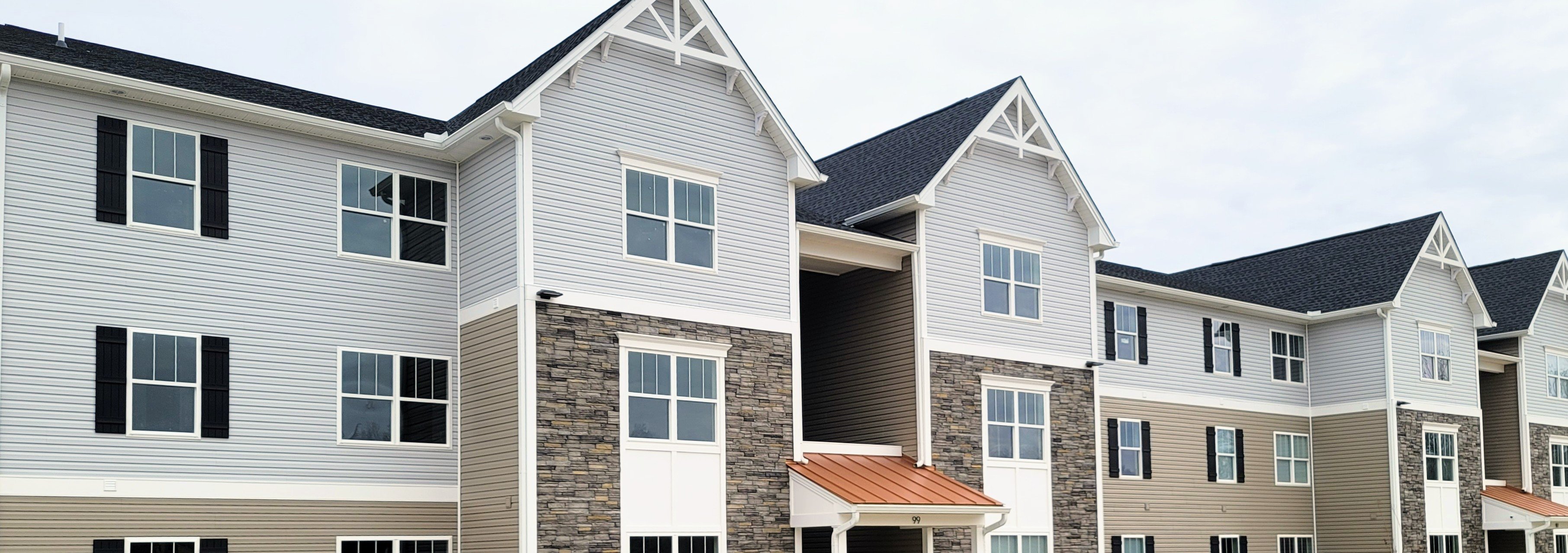Building your new home is exciting, especially when you understand how the process works. The following overview outlines the typical steps your builder will take in the construction of a home and will help keep you abreast of what happens at key stages.
1. Prepare site and pour foundation: Often, site preparation and foundation work are performed by the same crew, but this may not be the case with a wooded lot. Using a backhoe and a bulldozer, the crew clears the site of rocks, debris and trees for the house and, if applicable, the septic system. The crew levels the site, puts up wooden forms to serve as a template for the foundation, and digs the holes and trenches. Footings (structures where the house interfaces with the earth that supports it) are installed. If your home is going to have a well, it will be dug at this point.
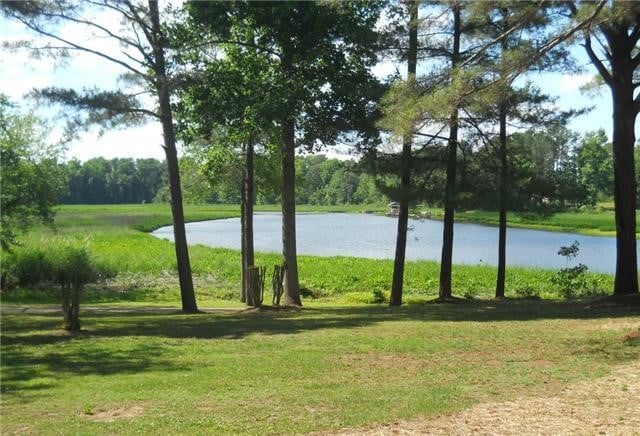
If the home has a full basement, the hole is dug, the footings are formed and poured, and the foundation walls are formed and poured. If it’s slab-on-grade, the footings are dug, formed and poured; the area between them is leveled and fitted with utility runs (e.g. plumbing drains and electrical chases); and the slab is poured.
Once concrete is poured into the holes and trenches, it will need time to cure. During this period, there will be no activity on the construction site.
After the concrete is cured, the crew applies a waterproofing membrane to the foundation walls; installs drains, sewer and water taps and any plumbing that needs to go into the first-floor slab or basement floor; and backfills excavated dirt into the hole around the foundation wall.
2. Complete rough framing: The floor systems, walls and roof systems are completed (collectively known as the shell or skeleton of the house). Plywood or oriented strand board (OSB) sheathing is applied to the exterior walls and roof, and windows and exterior doors are installed. The sheathing is then covered with a protective barrier known as a house wrap; it prevents liquid water from infiltrating the structure, while allowing water vapor to escape. This reduces the likelihood of mold and wood rot.
3. Complete rough plumbing, electrical and HVAC: Once the shell is finished, siding and roofing can be installed. At the same time, the electrical and plumbing contractors start running pipes and wires through the interior walls, ceilings and floors. Sewer lines and vents, as well as water supply lines for each fixture, are installed. Bathtubs and one-piece shower/tub units are put in place at this point because there’s more room to maneuver large, heavy objects.
Ductwork is installed for the heating, ventilation and air-conditioning (HVAC) system, and possibly the furnace. HVAC vent pipes are installed through the roof, and insulation is installed in the floors, walls and ceilings.
After the roofing goes on, the house is considered “dried in.” The electrician then installs receptacles for outlets, lights and switches and runs wires from the breaker panel to each receptacle. Wiring for telephones, cable TV and music systems is included in this work.
Note that HVAC ducts and plumbing are usually installed before wiring, because it’s easier to run wires around pipes and ducts than vice versa.
4. Install insulation: Insulation plays a key role in creating a more comfortable, consistent indoor climate while significantly improving a home’s energy efficiency. One of the most important qualities of insulation is its thermal performance or R-value, which indicates how well the material resists heat transfer. Most homes are insulated in all exterior walls, as well as the attic and any floors that are located above unfinished basements or crawl spaces.
The most common types of insulation used in new homes are fiberglass, cellulose and foam. Depending on the region and climate, your builder may also use mineral wool (otherwise known as rock wool or slag wool); concrete blocks; foam board or rigid foam; insulating concrete forms (ICFs); sprayed foam; and structural insulated panels (SIPs).
Blanket insulation, which comes in batts or rolls, is typical in new-home construction. So is loose-fill and blown-in insulation, which is made of fiberglass, cellulose or mineral-wool particles. Another insulation option, liquid foam, can be sprayed, foamed-in-place, injected or poured. While it costs more than traditional batt insulation, liquid foam has twice the R-value per inch and can fill the smallest cavities, creating an effective air barrier.
Fiberglass and mineral-wool batts and rolls are usually installed in side walls, attics, floors, crawl spaces, cathedral ceilings and basements. Manufacturers often attach a facing such as kraft paper or foil-kraft paper to act as a vapor barrier and/or air barrier. In areas where the insulation will be left exposed, such as basement walls, the batts sometimes have a special flame-resistant facing.
5. Complete drywall and interior textures; start exterior finishes: Drywall is hung and taped so the seams between the boards aren’t visible, and drywall texturing (if applicable) is completed. The primer coat of paint is also applied after taping is complete. Contractors begin installing exterior finishes such as brick, stucco, stone and siding.
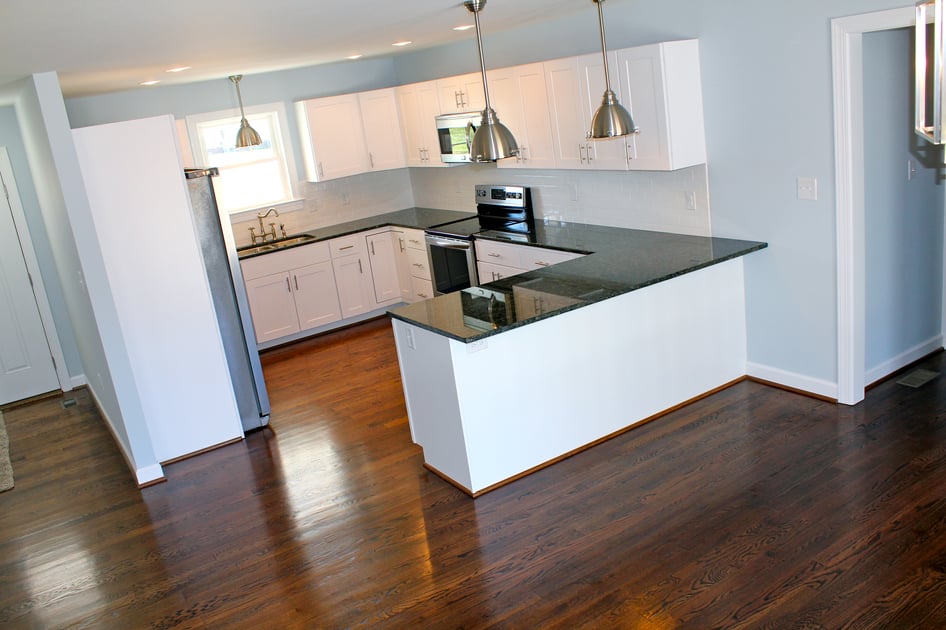
6. Finish interior trim; install exterior driveways and walkways: Interior doors, baseboards, door casings, window sills, moldings, stair balusters and other decorative trim are installed, along with cabinets, vanities and fireplace mantels and surrounds. Walls get a finish coat of paint and are wallpapered where applicable.
Generally, exterior driveways, walkways and patios are formed at this stage. Many builders prefer to wait until the end of the project before pouring the driveway because heavy equipment (such as a drywall delivery truck) can damage concrete. But some builders pour the driveway as soon as the foundation is completed so that when homeowners visit the construction site, they won’t get their shoes muddy.
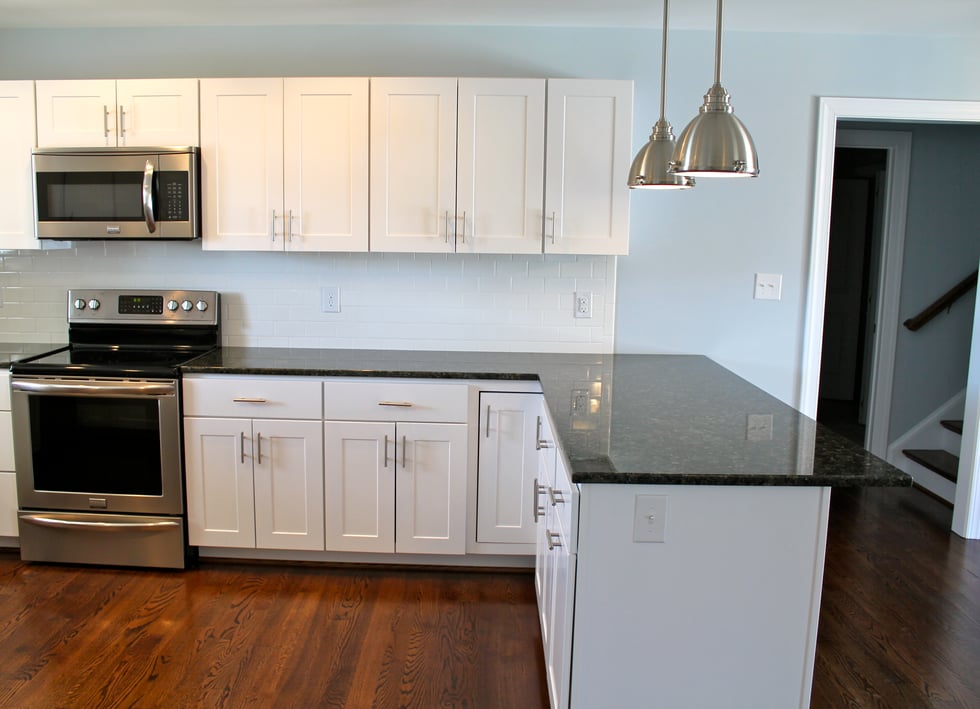
7. Install hard-surface flooring and countertops; complete exterior grading:Ceramic tile, vinyl and wood flooring are installed as well as countertops. Exterior finish grading is completed to ensure proper drainage away from the home and prepare the yard for landscaping.
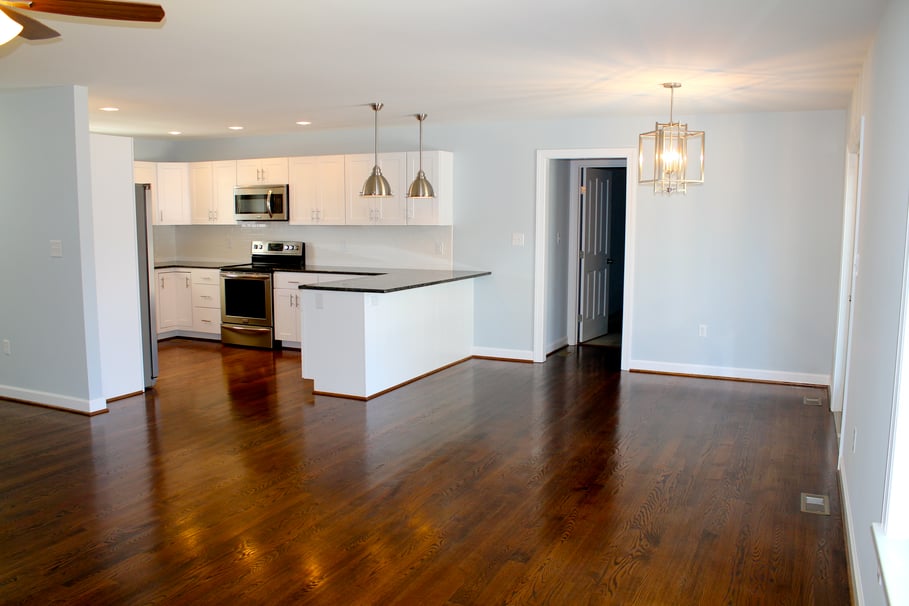
8. Finish mechanical trims; install bathroom fixtures: Light fixtures, outlets and switches are installed and the electrical panel is completed. HVAC equipment is installed and registers completed. Sinks, toilets and faucets are put in place.
9. Install mirrors, shower doors and finish flooring; finish exterior landscaping: Mirrors, shower doors and carpeting are installed, and final cleanup takes place. Trees, shrubs and grass are planted and other exterior landscaping completed.
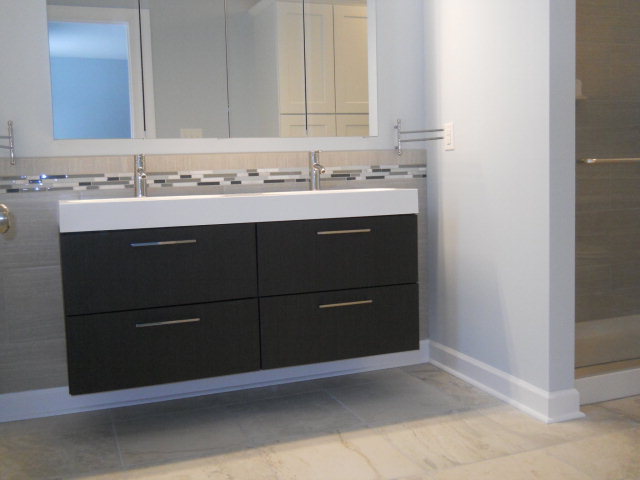
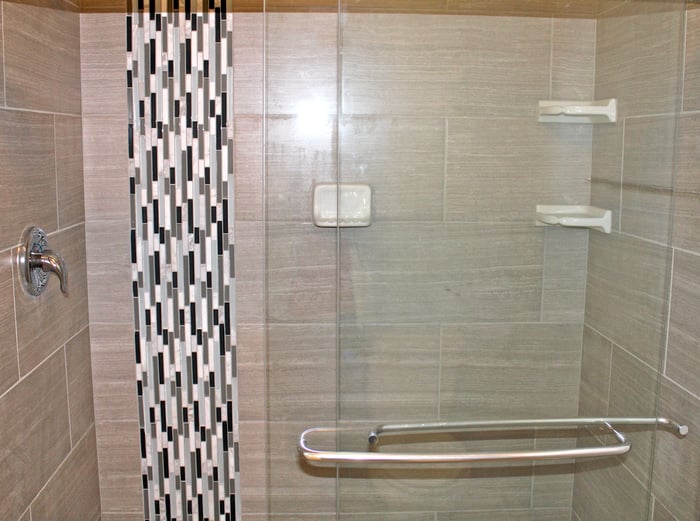
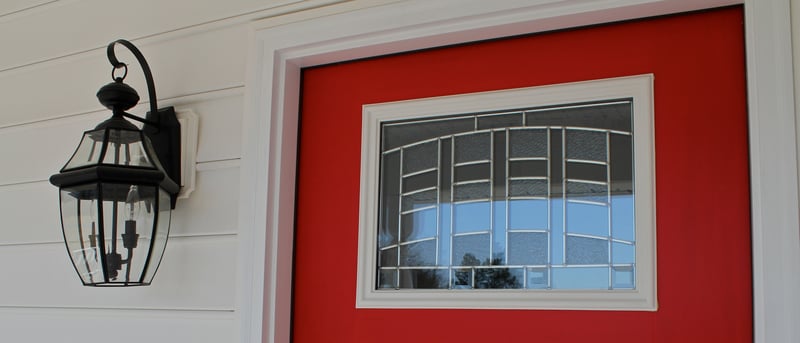
10. Final walkthrough: Your builder will walk you through your new home to acquaint you with its features and the operation of various systems and components, and explain your responsibilities for maintenance and upkeep as well as warranty coverage and procedures. This is often referred to as a pre-settlement walkthrough. It’s also an opportunity to spot items that need to be corrected or adjusted, so be attentive and observant. Examine the surfaces of countertops, fixtures, floors and walls for possible damage. Sometimes disputes arise because the homeowner discovers a gouge in a countertop after move-in, and there’s is no way to prove whether it was caused by the builder’s crew or the homeowner’s movers.
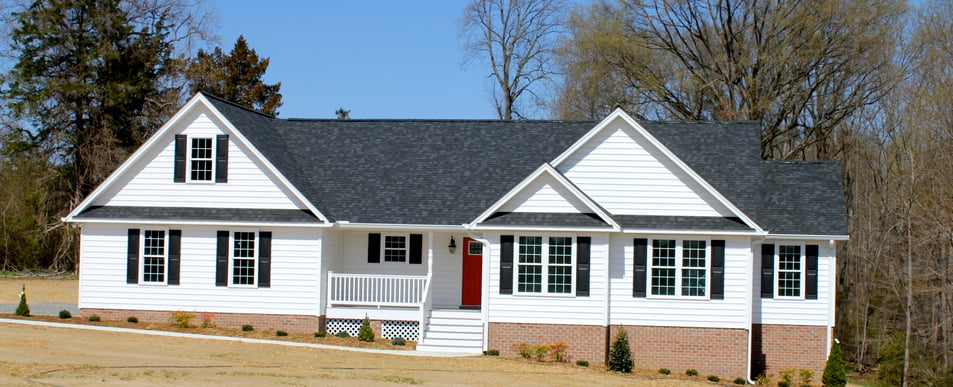
For safety as well as logistical reasons, builders discourage customers from dropping in unannounced at the construction site. If you’d like to pay a visit, be sure to arrange it in advance. Chances are your builder will conduct regular walkthroughs to bring you up to speed on the progress of the work.
When you decide that you are ready to build your first home or your dream home call Packett Builders, Inc. Building a new home can be challenging and overwhelming and that's exactl why you need a professional with years of experience. That's why you need Packett Buiders, Inc.
Gregory Packett, CEO of Packett Properties, is undoubtely the most unique developer in the Northern Neck, and Middle Peninsula Real Estate scene.

After starting his company from scratch nearly two decades ago, Gregory managed to purchase his first real estate property at the ripe ol' age of 21, and built his first house at 23. He is currently remodeling he old Nadji Nook antique store in downtown Tappahannock, soon to be the future home of Northern Neck Burger Company and his business office. His take charge, and aggressive, yet modest personality has earned him an impeccable reputation which reflects in all his dealings.
Gregory's commitment to excellence and superiority, transcends beyond your initial meet and greet, and transaction hand shake. Here's what you won't find with just any ol' builder.....
Through his hands-on approach, Gregory has become an industry leader in all facets of Real Estate sales and development in the Northern Neck, and Middle Peninsula. There's no job too big, and no job too small for this visionary developer, so don't be suprised when you see Gregory digging trenches, laying plumbing, knocking down walls, building decks, and installing fixtures in your future home.
New home construction, land development, waterfront property, commercial properties, rental properties.....Gregory has done it all, and has a reputation in the local community of being a hard working guy with impecible integrity.
Ref: NewHomeSource.com
